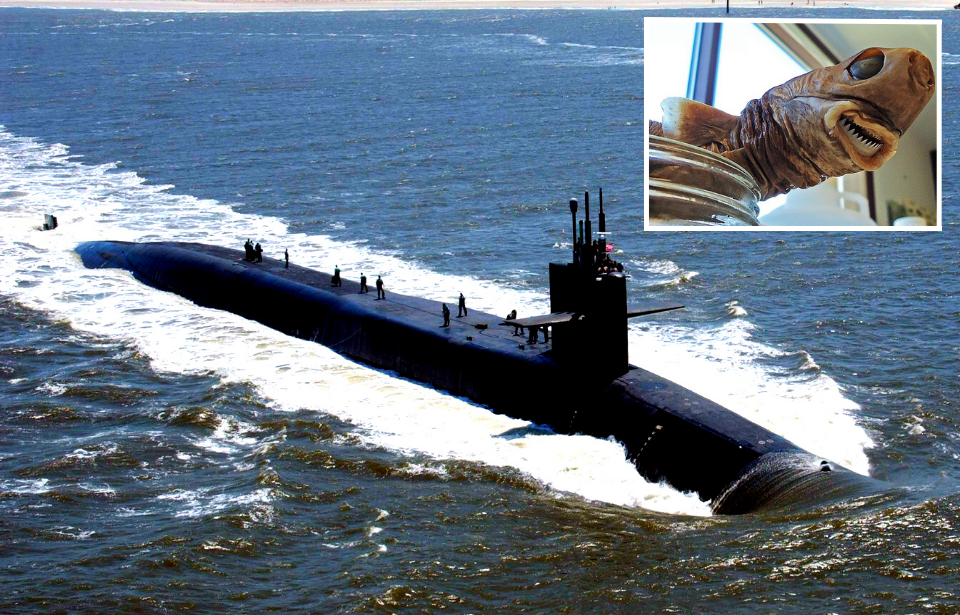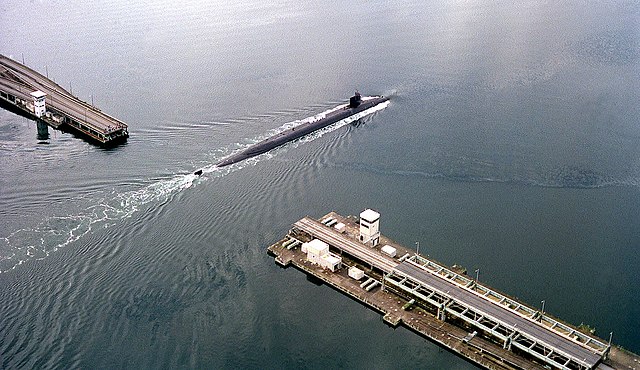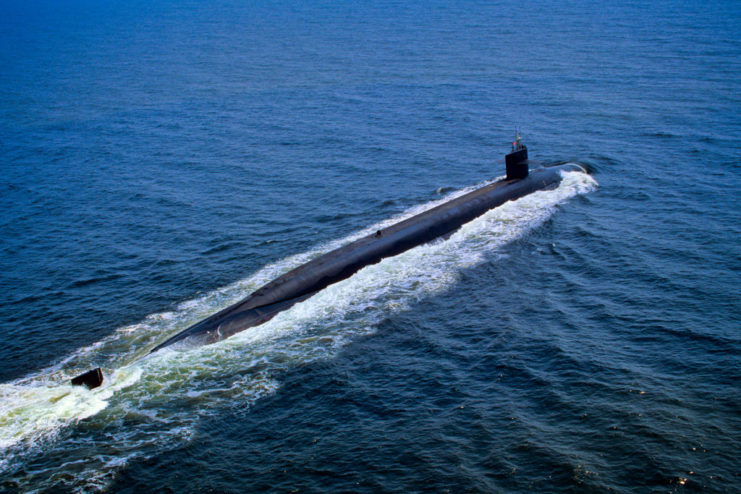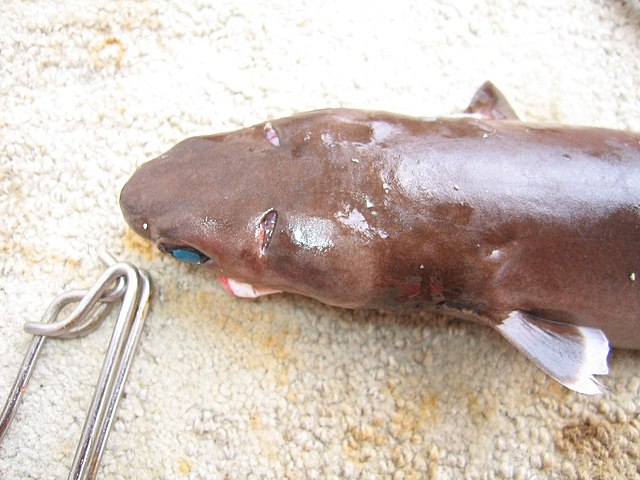A Shark Wreaked Havoc on the US Navy’s Nuclear Submarine Fleet
Nuclear subs obviously aren’t all that tasty, but they seem to bite just about anything — even research equipment in the ocean. The distinctive bites have been found in all kinds of fish and other sharks, and even a human has been attacked by the little guys.
This Tiny Shark Can Take Out Nuclear Submarines
Email icon An envelope. It indicates the ability to send an email.
Twitter icon A stylized bird with an open mouth, tweeting.Twitter LinkedIn icon The word “in”.
LinkedIn Fliboard icon A stylized letter F.
Flipboard Facebook Icon The letter F.
Facebook Email icon An envelope. It indicates the ability to send an email.
Email Link icon An image of a chain link. It symobilizes a website link url.
The cat-sized shark in the picture to the right doesn’t look that intimidating, but it has the power to take down an entire nuclear submarine. The fish’s strange bite can get at the softer areas of the submarines, National Geographic’s Ed Yong reports:
The fearless cookie-cutters have even disabled the most dangerous ocean creature of all—the nuclear submarine. They attacked exposed soft areas including electrical cables and rubber sonar domes. In several cases, the attacks effectively blinded the subs, forcing them back to base for repairs. They later returned, fitted with fibreglass coverings.
The attacks happened in the 1970s and the problem seems to have been taken care of, though in several cases the sharks did enough damage to the vessel’s sonar equpiment that the oils inside that transmit sound would leak out of the ship and break the equipment — the subs could no longer see what was around them, according to the ReefQuest Centre for Shark Research.
Nuclear subs obviously aren’t all that tasty, but they seem to bite just about anything — even research equipment in the ocean. The distinctive bites have been found in all kinds of fish and other sharks, and even a human has been attacked by the little guys.
See the rest of Yong’s blog post for more fascinating facts about the cookiecutter shark and the analysis of a new paper out in Pacific Science this month, detailing cookiecutter bites on a great white shark. Here are some more images:
A Shark Wreaked Havoc on the US Navy’s Nuclear Submarine Fleet

There are a number of reasons why submarines have been taken out of commission while scouring the depths of the ocean. These include hitting sea mines, being shot at with torpedoes, getting into accidents – some have even been scuttled. There’s one reason, however, that we never thought could cause enough damage to force a submarine back to port: a cat-sized shark.
That’s exactly what was happening to the US Navy‘s nuclear fleet – in particular, its Ohio-class submarines – during the Cold War.

The Ohio-class consists of four guided missile submarines (SSGNs) – the USS Ohio, Michigan, Florida and Georgia – and 14 ballistic missile submarines (SSBNs) – the USS Henry M. Jackson, Alabama, Alaska, Nevada, Tennessee, West Virginia, Kentucky, Pennsylvania, Nebraska, Maryland, Rhode Island, Louisiana, Wyoming and Maine.
The class features the largest submarines ever built for the Navy and are among the largest in the world, behind only the Russian Navy‘s Typhoon-class and Borei-class. However, the Ohio-class, does carry more armaments, with each equipped with 24 Trident II missiles, compared to just 16 onboard the Borei-class and 20 on the Typhoon-class.

The submarines were among the most advanced weapons technology during the Cold War. As they sailed beneath the water, officials began to note sporadic issues. These included leaking oil lines, chunks missing from electrical cables, damaged sonar domes and sound probes that would suddenly stop working.
Oftentimes, the damage was severe enough that the vessels needed to return to their bases for repairs.
While the Navy initially suspected the damage to be the result of a new Soviet weapon, it was actually caused by something much more unexpected: the cookiecutter shark.

For those who have never seen a cookiecutter shark, here is a quick overview. Also known as the cigar shark, the species grows to a length of between 16 and 20 inches and is found in waters across the world. Its name derives from the holes it leaves in its (oftentimes much larger) prey when feeding, which resemble the marks made by a cookie cutter.
Cookiecutter shark bites have been found on a wide variety of sea-life and have even been noted on manmade structures, such as oil rigs, as they attack any soft area that is exposed. The Navy eventually realized the shark was behind the damage to its nuclear submarines and decided the best way to counter it was to place a fiberglass dome around the vessels’ most sensitive parts.
]]>